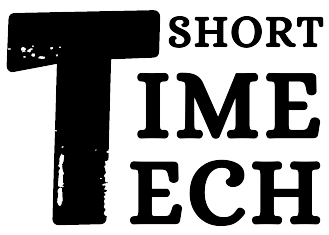As artificial intelligence (AI) continues to advance rapidly, governments and regulatory bodies around the world are stepping up efforts to create frameworks that ensure AI is developed and used responsibly. The recent wave of AI regulations is reshaping the global tech industry in profound ways. This article explores the key aspects of these regulations, their impact on businesses and consumers, and what to expect moving forward.
1. Overview of Recent AI Regulations
In 2024, several major regions have introduced or updated regulations aimed at governing the use and development of AI technologies. The European Union (EU), United States, and China are at the forefront of these efforts, each taking a distinct approach to AI governance.
European Union: The EU’s Artificial Intelligence Act, which came into effect in January 2024, is one of the most comprehensive regulatory frameworks globally. It classifies AI systems into four categories based on risk: minimal, limited, high, and unacceptable. High-risk AI applications, such as those used in critical infrastructure or public safety, face stringent requirements, including transparency, accountability, and regular audits.
United States: The U.S. has introduced a mix of federal and state-level regulations. The National AI Initiative Act aims to foster innovation while addressing ethical concerns. Recently, the Federal Trade Commission (FTC) has issued guidelines for AI transparency and fairness, focusing on consumer protection and preventing discriminatory practices. Additionally, states like California have enacted their own AI regulations, emphasizing data privacy and security.
China: China’s AI regulations are centered on maintaining social stability and national security. The Cybersecurity Law and the recently updated AI Ethics Guidelines emphasize the importance of aligning AI developments with socialist values and ensuring that AI systems do not undermine social harmony or public safety.
2. Implications for Tech Companies
The new regulatory landscape has significant implications for tech companies operating globally. Companies must now navigate a complex web of regulations, which can vary greatly between regions. This creates both challenges and opportunities:
Compliance Costs: Companies will face increased compliance costs as they adapt to different regulatory requirements. This includes investing in new technologies for monitoring and reporting, as well as hiring legal and compliance experts to ensure adherence to diverse regulations.
Innovation vs. Regulation: While regulations aim to mitigate risks, they may also impact the pace of innovation. Companies must strike a balance between adhering to regulations and continuing to push the boundaries of AI technology. Overly stringent regulations could stifle innovation, while well-designed frameworks can provide a clear path for responsible development.
Market Access: Compliance with local regulations can affect a company’s ability to operate in certain markets. For instance, companies that do not meet the EU’s high-risk AI requirements might find it challenging to access European markets. Conversely, adhering to stringent standards could enhance a company’s reputation as a responsible AI developer.
3. Impact on Consumers
For consumers, the new AI regulations bring both benefits and potential concerns:
Enhanced Transparency and Accountability: Regulations like the EU’s Artificial Intelligence Act are designed to improve transparency and accountability in AI systems. Consumers can expect clearer information about how AI technologies are used and how decisions are made, which can help build trust in AI applications.
Data Privacy: With increased emphasis on data protection, consumers can anticipate better safeguards for their personal information. Regulations in the U.S. and Europe focus on ensuring that AI systems handle data responsibly and provide consumers with more control over their personal data.
Potential for Reduced Bias: By addressing ethical concerns and promoting fairness, these regulations aim to reduce biases in AI systems. This can lead to more equitable outcomes in areas such as hiring, lending, and law enforcement.
4. Future Outlook
As AI technology continues to evolve, so too will the regulatory landscape. Key trends to watch for include:
Global Harmonization: There is a growing call for international collaboration to harmonize AI regulations. Efforts to align standards across borders could help reduce compliance complexity for multinational companies and ensure a consistent approach to AI governance.
Adaptive Regulations: Regulators are likely to adopt adaptive and flexible approaches as AI technology advances. This may involve updating regulations to address new challenges and opportunities, ensuring that policies remain relevant and effective.
Public Engagement: Ongoing public and stakeholder engagement will play a crucial role in shaping future AI regulations. As AI impacts various aspects of daily life, input from diverse perspectives will help create balanced regulations that protect public interests while fostering innovation.
In summary, the recent wave of AI regulations represents a significant shift in how AI technologies are governed globally. While these regulations introduce new challenges for tech companies and impact consumers in various ways, they also offer opportunities for creating a more responsible and transparent AI ecosystem. As the regulatory landscape continues to evolve, staying informed and adaptable will be key for navigating the future of AI.

